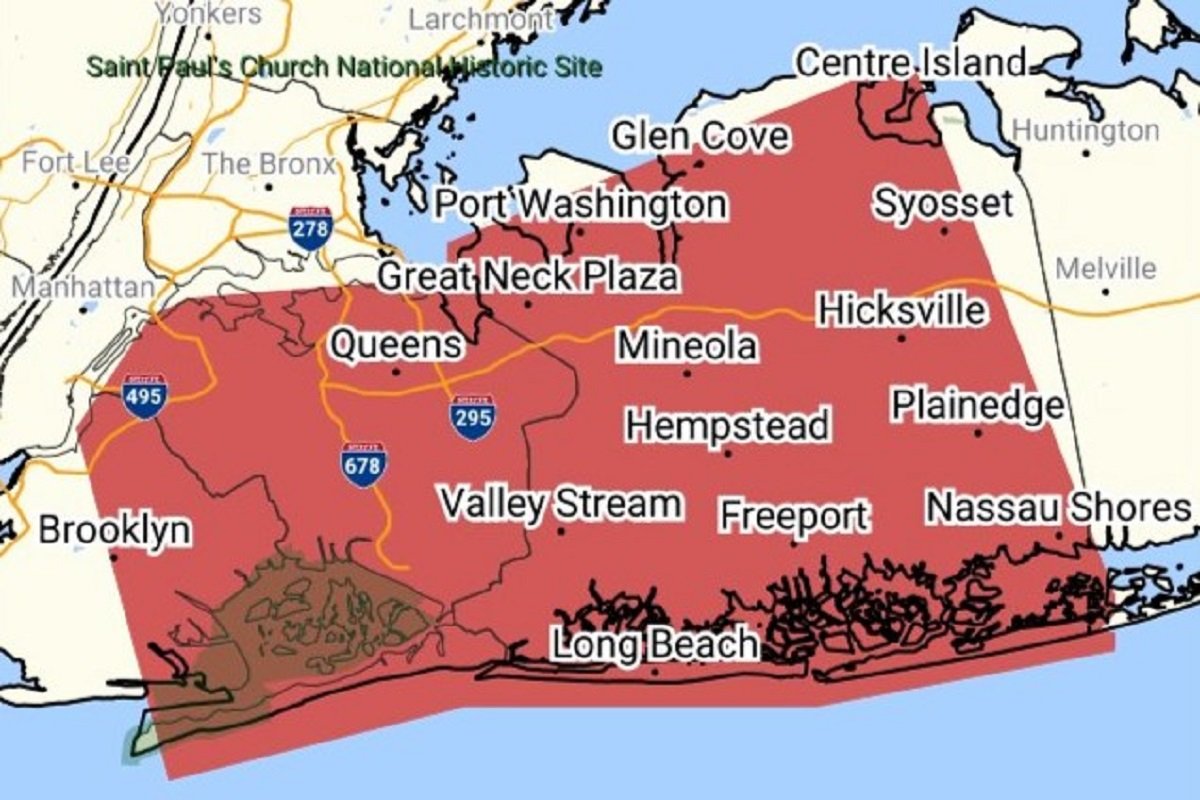Flood Warning Systems: Understanding Flash Flood Alerts And Protecting Yourself

Table of Contents
Understanding Different Types of Flood Warnings
Navigating the terminology surrounding flood alerts can be confusing. Different alerts signify varying levels of flood risk, requiring different responses. Knowing the difference between a watch, warning, and advisory is paramount.
H3: Flash Flood Watches: A flash flood watch means that conditions are favorable for flash flooding to develop. This isn't an immediate threat, but it's a strong indication that you should be prepared. The time frame for a watch can range from hours to a day.
- Prepare an emergency kit: Include essentials like water, non-perishable food, flashlights, batteries, first-aid supplies, and medications.
- Identify evacuation routes: Know multiple ways to leave your home or area should flooding become imminent.
- Secure valuable items: Move important documents, electronics, and other valuables to higher ground.
H3: Flash Flood Warnings: A flash flood warning is far more serious. This means flash flooding is either imminent or already occurring in your area. Immediate action is required.
- Move to a safe location: Evacuate if instructed to do so by authorities. Seek higher ground if evacuation isn't possible.
- Avoid driving through flooded areas: Even a few inches of water can sweep a car away.
- Report flooding to authorities: Contact your local emergency services to report any dangerous flooding situations.
H3: Flood Advisories: A flood advisory indicates that minor flooding is occurring or is expected to occur. While less urgent than a warning, it's still important to stay informed and monitor the situation.
- Stay updated on weather reports: Keep an eye on the forecast and any updates from official sources.
- Avoid unnecessary travel in affected areas: Reduce your risk of being caught in flooded areas.
- Be prepared for potential flooding: Have your emergency kit readily available and be ready to take action if the situation worsens.
H3: Other Alerts (River Flood Warnings, Coastal Flood Warnings): Beyond flash floods, other types of flooding require awareness. River flood warnings alert communities about rising river levels, while coastal flood warnings address potential flooding due to high tides and storm surges. For specific information on these types of alerts and their implications in your area, visit the National Weather Service website.
- Understand specific risks for your location: Are you in a flood plain? Near a river or coast? Your risk level will vary depending on your location.
- Know your local emergency contacts: Have the numbers for your local emergency services, police, and fire departments readily available.
Sources of Flood Warning Information
Reliable information is your best defense against flash floods. Knowing where to find accurate and timely alerts is crucial.
H3: National Weather Service (NWS): The NWS is the primary source for weather-related information in the United States. They provide detailed forecasts, warnings, and advisories through various channels.
- Sign up for weather alerts: Register your contact information to receive alerts directly to your phone, email, or other devices.
- Download the NWS app: Access real-time information, radar imagery, and warnings quickly and easily.
- Follow their social media accounts: Stay up-to-date on the latest weather news and warnings.
H3: Local News and Media: Your local news stations and newspapers provide hyperlocal information about flooding events affecting your specific community.
- Identify your trusted local news sources: Know which news outlets provide reliable coverage for your area.
- Check for weather updates regularly: Stay informed about the current weather conditions and any potential flood threats.
H3: Emergency Alert Systems (EAS): The EAS broadcasts urgent alerts, including flood warnings, via television and radio.
- Ensure your devices are properly set up: Make sure your TV and radio are capable of receiving EAS alerts.
Protecting Yourself During a Flash Flood
Preparation and swift action are key to surviving a flash flood.
H3: Evacuation Procedures: If an evacuation order is issued, act immediately.
- Follow official instructions: Obey all instructions from emergency personnel and authorities.
- Know your evacuation routes: Plan your escape routes in advance and have multiple options in mind.
- Secure your home: Take steps to protect your property as much as possible before evacuating.
- Bring essential supplies: Pack your emergency kit and any other necessary items.
H3: Safe Driving Practices: Never drive through floodwaters.
- Never drive through flooded areas: The depth of the water can be deceiving, and even a small amount of water can cause your vehicle to stall or be swept away.
- Find alternate routes: Plan alternative routes in advance if flooding is expected in your regular commute area.
- Be aware of road closures: Pay attention to road closure signs and barricades.
H3: Staying Safe at Home: If you are caught indoors during a flash flood:
- Move valuables to higher ground: Protect your belongings from water damage.
- Protect electrical appliances: Unplug appliances to prevent electrical shock.
- Know where to go in your home if flooding occurs: Identify a safe, elevated area in your home.
Conclusion
Understanding flood warning systems, from flash flood watches to river flood warnings, is critical for personal safety. Staying informed through reliable sources like the National Weather Service and local news, and preparing an emergency plan, are essential steps in mitigating the risks associated with flash floods and other types of flooding. By taking proactive measures and being aware of the various alerts, you can significantly reduce your risk and protect yourself and your family. Stay safe and informed by regularly checking your local flood warning systems and preparing a personal flood safety plan today! For more information on flood safety and preparedness, visit [link to relevant government website, e.g., FEMA].

 Hoka Cielo X1 2 0 A Detailed Review Of The Lightweight Running Shoe
Hoka Cielo X1 2 0 A Detailed Review Of The Lightweight Running Shoe
 The Spread Of Internal Parasite Fungi A Climate Change Consequence
The Spread Of Internal Parasite Fungi A Climate Change Consequence
 O Kuluep Krizi Sorusturmanin Ardindan Ne Olacak
O Kuluep Krizi Sorusturmanin Ardindan Ne Olacak
 Accentures Delayed Promotion Cycle 50 000 Employees To Be Upgraded
Accentures Delayed Promotion Cycle 50 000 Employees To Be Upgraded
 Bank Of Canada Rate Cut Outlook Shifts Following Retail Sales Increase
Bank Of Canada Rate Cut Outlook Shifts Following Retail Sales Increase
